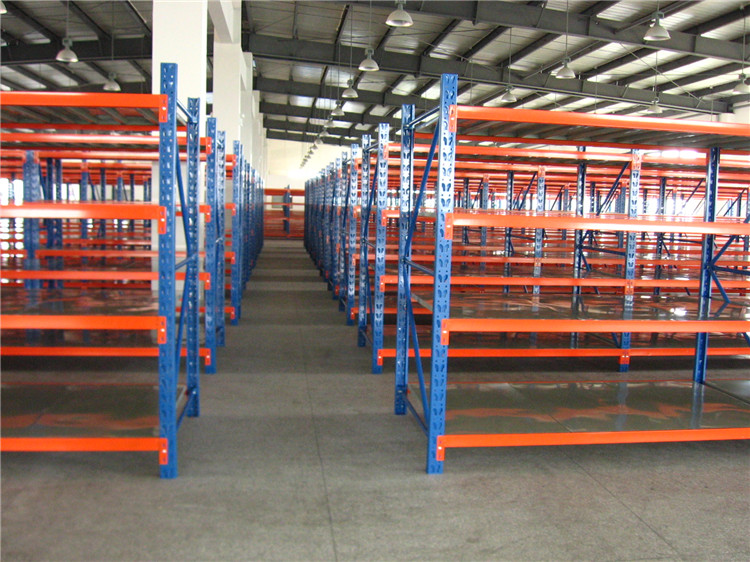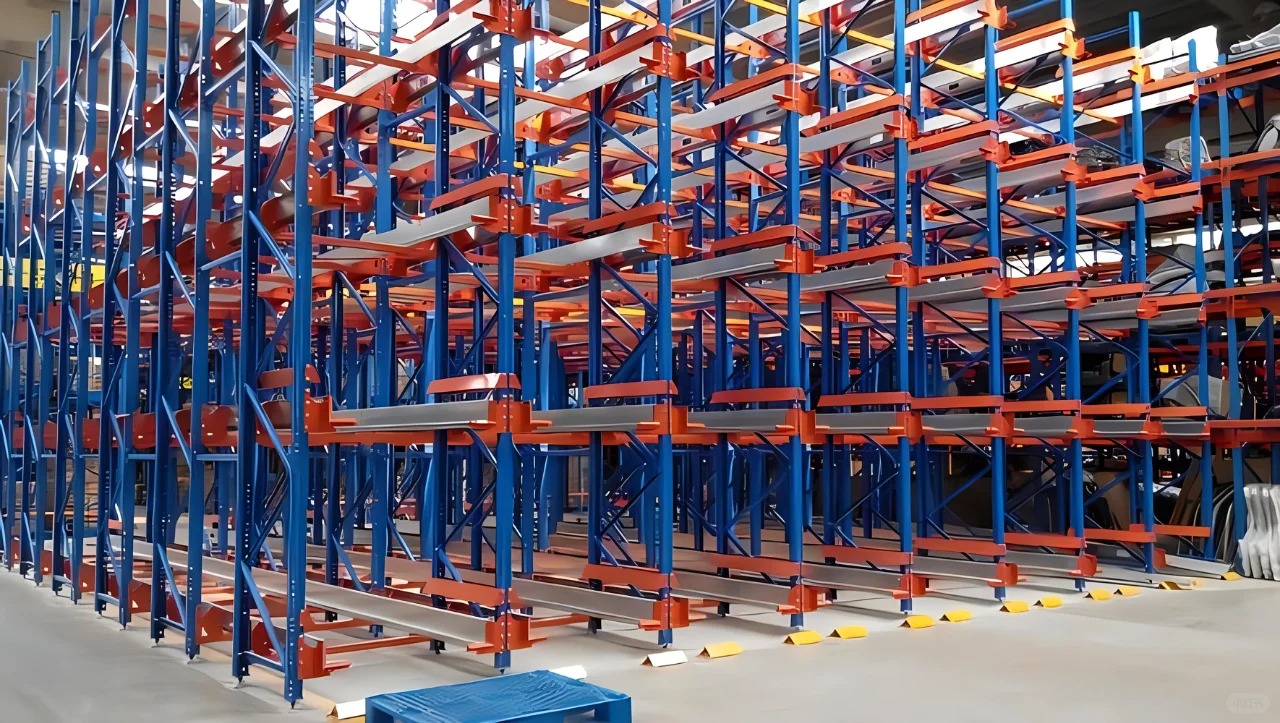In today's fast-paced industrial, retail, and logistics environments, maximizing space, efficiency, and adaptability isn't just a goal – it's a necessity for survival and growth. Enter the diversified rack approach: a strategic methodology that moves beyond reliance on a single racking type to create a tailored, optimized storage ecosystem. Implementing a diversified rack system isn't merely about installing different shelves; it's about intelligently combining specialized racking solutions to address specific storage challenges and unlock significant operational advantages. Here are five compelling benefits driving the adoption of diversified rack strategies:

1. Unparalleled Space Optimization & Density
The core promise of any racking system is better space utilization, but a diversified rack approach takes this to an entirely new level of sophistication.
Matching Load to Solution: Instead of forcing all inventory into a single, potentially inefficient rack type (like using only pallet racking for small, loose items), a diversified rack system uses:
Pallet Racking: For full pallet loads, maximizing vertical cube.
Carton Flow Racking: For high-volume, high-SKU, FIFO (First-In, First-Out) picking of smaller cases or totes. This leverages gravity, dramatically reducing travel time and increasing pick density within aisles.
Shelving & Bin Systems: For small parts, slow movers, or items requiring high accessibility. Integrating these into the overall diversified rack plan ensures these items don't waste valuable pallet positions.
Mezzanines: Creating additional floor space overhead for offices, packaging stations, or slow-moving inventory storage, freeing up prime ground-level space for faster-moving goods within the diversified rack footprint.
Mobile Shelving: For high-density storage of archives or infrequently accessed items, collapsing aisles when not in use.
Utilizing Unique Layouts: A diversified rack strategy allows for hybrid layouts, like push-back racking in the bulk area feeding into carton flow lanes for order picking, all within a cohesive flow. This targeted approach eliminates wasted air space above smaller items and inefficient use of floor space for bulky pallets of slow movers.
2. Enhanced Operational Efficiency & Productivity
A well-planned diversified rack system directly translates to faster operations and reduced labor costs by streamlining workflows.
Optimized Picking Paths: By storing fast-moving SKUs in the most accessible locations (like carton flow lanes at waist height) within the diversified rack setup, pickers spend less time traveling and searching. Slower movers can be placed higher or in denser storage zones.
Reduced Handling: Carton flow and pallet flow systems use gravity to bring product to the picker, minimizing manual movement. Integrating conveyors or automated guided vehicles (AGVs) with the diversified rack infrastructure further automates material movement.
Specialized Task Support: Dedicated areas within the diversified rack ecosystem support specific functions:
Kitting Areas: Shelving and bin systems near assembly lines.
Returns Processing: Dedicated shelving bays for efficient sorting and restocking.
Value-Added Services (VAS): Flexible shelving or workbenches integrated near storage for labeling, bundling, or customization.
Improved Order Accuracy: Clear organization and dedicated locations for different SKU types within the diversified rack system reduce picking errors. Bin locations and clear signage are easier to implement effectively.
3. Increased Flexibility & Scalability
Market demands fluctuate, product lines evolve, and operational needs change. A diversified rack foundation provides inherent agility.
Adapt to Changing Inventory Profiles: As SKU characteristics change (size, weight, velocity), the diversified rack system allows you to reallocate space easily. Carton flow lanes can be reconfigured, shelving modules can be added or moved, and pallet racking beams can be adjusted. You're not locked into a single storage methodology.
Scale Selectively: Need more space for fast-moving small items? Expand the carton flow or shelving section. Experiencing growth in palletized goods? Add more pallet racking bays. A diversified rack strategy lets you scale the specific components that need it, often without a complete system overhaul.
Accommodate New Technologies: Modern warehouses increasingly integrate automation (AS/RS, robots). A diversified rack system designed with modularity in mind is easier to interface with automated storage and retrieval systems for specific SKU types. It provides a more adaptable base layer for technological upgrades.
Reconfigure Layouts: Business processes change. A diversified rack approach using modular components makes it significantly easier to redesign workflows and move storage zones to match new operational priorities compared to monolithic, single-system warehouses.

4. Improved Safety & Inventory Control
Safety is paramount, and inventory accuracy is critical. A diversified rack strategy contributes positively to both.
Appropriate Load Handling: Storing items in racks specifically designed for their weight and dimensions (e.g., heavy pallets on robust pallet racking, small items on secure shelving) inherently reduces the risk of rack overload, collapse, or items falling – a core safety benefit of proper diversified rack implementation.
Enhanced Visibility & Accessibility: Different rack types offer different levels of visibility. Selective pallet rack provides clear sight lines. Carton flow ensures front-facing access. Shelving allows easy visibility of bin contents. This improves cycle counting accuracy and simplifies inventory management within the diversified rack environment. Less digging through inappropriate storage means faster counts and fewer errors.
Organized Workflows: Reducing clutter and clearly defining storage zones for different product types within the diversified rack system minimizes trip hazards and improves overall housekeeping. Dedicated aisles for different activities (picking, replenishment) can be better defined.
Damage Reduction: Storing items correctly in the right rack type (e.g., long rolls on cantilever racks, fragile items on secure shelving with bin dividers) significantly reduces the risk of product damage during storage or retrieval, a key economic and safety factor in a diversified rack setup.
5. Optimized Cost Efficiency & ROI
While implementing a diversified rack system may require a higher initial planning investment, the long-term financial benefits are compelling.
Maximized Real Estate Value: By achieving significantly higher storage density through specialized solutions like carton flow, push-back, or mobile shelving within the diversified rack plan, you delay or avoid the massive costs associated with expanding your facility footprint or leasing additional space. This is often the single largest ROI factor.
Reduced Labor Costs: As highlighted under efficiency, faster picking, reduced travel time, and minimized manual handling directly translate to lower labor requirements per order picked or item stored within the diversified rack ecosystem. Automation integration potential further enhances this.
Lower Product Damage & Shrink: Improved storage conditions and handling within the diversified rack system lead to fewer damaged goods and less inventory loss, protecting profit margins.
Extended Equipment Life: Using the right rack for the right load prevents undue stress and damage to the racking components themselves. Properly stored inventory is also less likely to cause damage to handling equipment like forklifts.
Future-Proofing Investment: The inherent flexibility and scalability of a diversified rack strategy mean your storage investment is protected longer. You can adapt to future needs without completely replacing the system, providing a superior long-term ROI compared to rigid, single-system approaches.
Implementing Your Diversified Rack Strategy: Key Considerations
Transitioning to or designing a new diversified rack system requires careful planning:
Thorough SKU Analysis: Understand the complete profile of your inventory – dimensions, weight, turnover velocity (ABC analysis), handling requirements, and special needs (hazardous, temperature-sensitive).
Workflow Mapping: Analyze current and desired material flows (receiving, put-away, storage, picking, packing, shipping). Identify bottlenecks and opportunities for improvement that different rack types can solve.
Space Auditing & Planning: Accurately measure your facility, considering clearances, column locations, doorways, sprinkler systems, and potential future expansion. Utilize warehouse design software or consult specialists to model different diversified rack scenarios.
Budgeting & Phasing: Determine your budget realistically. A phased approach implementing the diversified rack plan in priority zones is often feasible and reduces disruption.
Partner Selection: Work with experienced racking suppliers and warehouse design consultants who understand the principles and benefits of a true diversified rack approach, not just selling a single product line. They can provide valuable insights on safety standards (OSHA, RMI), optimal configurations, and integration.
Safety First: Ensure all components of your diversified rack system meet or exceed industry safety standards (RMI/ANSI MH16.1). Include proper safety accessories like column guards, rack protectors, end-of-aisle guards, and secure anchoring. Regular professional inspections are non-negotiable.
In an era defined by volatility, complexity, and the relentless pursuit of efficiency, clinging to a one-size-fits-all racking solution is a competitive disadvantage. A strategic diversified rack approach is no longer a luxury; it's an operational imperative for warehouses, distribution centers, manufacturing facilities, and even retail backrooms seeking to thrive.
By thoughtfully combining pallet racking, carton flow, shelving, mezzanines, cantilever racks, and other specialized systems into a cohesive, diversified rack ecosystem, businesses unlock a powerful synergy. They achieve unprecedented space utilization, dramatically boost productivity and order accuracy, gain crucial operational flexibility, enhance safety and inventory control, and ultimately realize significant cost savings and a stronger return on investment.
The path to a leaner, more agile, and more profitable operation begins with recognizing that diversity in storage solutions is strength. Investing in a well-designed diversified rack strategy is an investment in the future resilience and success of your enterprise. Start analyzing your inventory and workflows today to unlock the transformative power of diversification.







